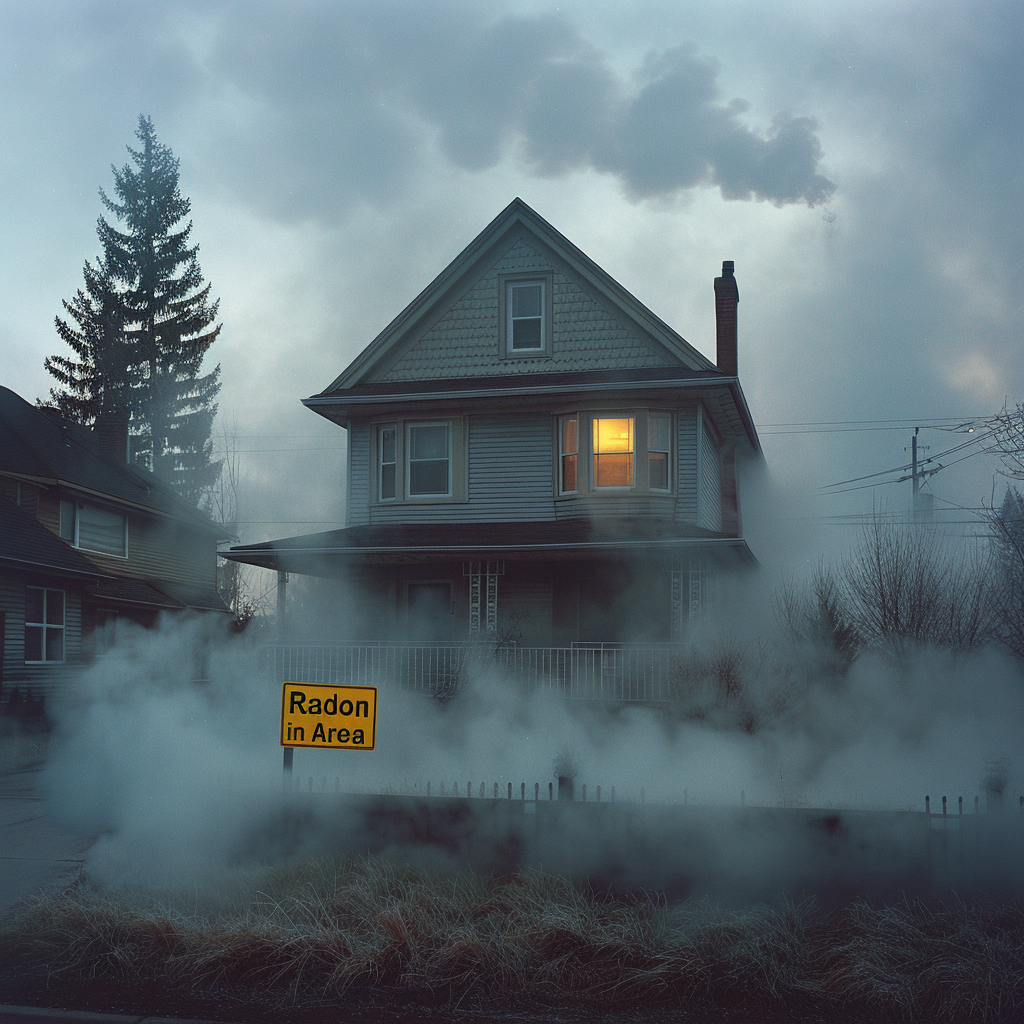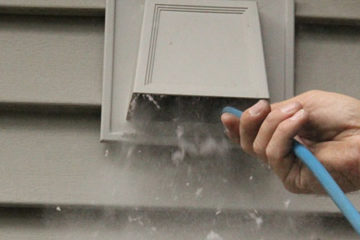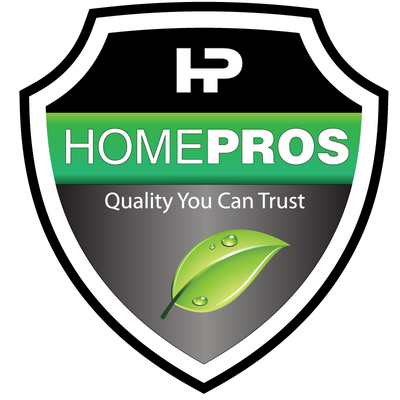Health Concerns Around Radon- Radon is a silent killer that many people are unaware of. This radioactive gas, which seeps into homes from the ground, poses a significant health risk if not properly addressed. Despite being the second leading cause of lung cancer after smoking, radon often goes undetected because it is invisible, odourless, and tasteless. Understanding the risks and health concerns associated with radon is crucial for protecting yourself and your loved ones. In this article, we’ll explore the dangers of radon exposure, how it affects your health, and what steps you can take to reduce these risks.
What is Radon?
Radon is a naturally occurring radioactive gas formed from the decay of uranium in soil, rock, and water. It can enter homes through cracks in the foundation, gaps around pipes, or even through the water supply. Once inside, radon can accumulate to dangerous levels, particularly in poorly ventilated areas like basements and crawl spaces. While radon is present everywhere in the environment, it becomes a health concern when it builds up inside homes and buildings where people spend extended periods of time.
How Does Radon Cause Health Problems? – Health Concerns Around Radon
Radon gas decays into tiny radioactive particles that, when inhaled, can damage the lining of the lungs. Over time, this damage can lead to lung cancer. The risk is significantly higher for people who smoke, but non-smokers are also at risk. In fact, radon exposure is the leading cause of lung cancer among non-smokers. The severity of health effects depends on the level of radon in your home, how long you are exposed, and whether you are a smoker.
Mechanism of Damage
When radon gas is inhaled, the radioactive particles attach to the lung tissue. As these particles decay further, they release bursts of energy that can damage the DNA in lung cells. This damage increases the risk of mutations that can lead to cancerous growth. Because the effects of radon exposure are not immediate, many people may live with elevated radon levels for years without realizing the potential danger they are facing.
The Health Risks of Radon Exposure
Lung Cancer Risk
The primary health risk associated with radon exposure is lung cancer. According to the Environmental Protection Agency (EPA), radon is responsible for about 21,000 lung cancer deaths each year in the United States alone. For non-smokers, radon is the leading cause of lung cancer. The risk of developing lung cancer from radon exposure increases significantly for smokers, as the combination of cigarette smoke and radon gas exposure acts synergistically, multiplying the risk.
Risk Factors
Several factors can influence the risk of developing lung cancer due to radon exposure:
- Radon Concentration: Higher levels of radon in the home increase the risk of lung cancer.
- Duration of Exposure: The longer you are exposed to elevated radon levels, the higher the risk.
- Smoking Status: Smokers have a much higher risk of developing lung cancer when exposed to radon compared to non-smokers.
- Home Characteristics: The construction type, ventilation, and foundation condition can all affect radon levels in a home.
Other Potential Health Effects
While lung cancer is the primary concern, some studies suggest that radon exposure may also contribute to other respiratory conditions, such as chronic obstructive pulmonary disease (COPD) or emphysema. However, these findings are less conclusive, and more research is needed to fully understand the broader health implications of radon exposure.
Understanding Radon Levels: What’s Safe and What’s Not
The concentration of radon is measured in picocuries per litre of air (pCi/L). The EPA recommends taking action to reduce radon levels if they are at or above 4 pCi/L. However, even levels below this threshold can pose a risk, especially over long periods of exposure. In Canada, the action level is set at 200 becquerels per cubic meter (Bq/m³).
Action Levels and Recommendations
- Below 2 pCi/L (or 100 Bq/m³): Considered relatively safe, but testing is still recommended to ensure levels remain low.
- Between 2 and 4 pCi/L (100-200 Bq/m³): Moderate risk. It is advisable to take steps to reduce radon levels, such as improving ventilation or sealing entry points.
- Above 4 pCi/L (or 200 Bq/m³): High risk. Immediate action should be taken to reduce radon levels in the home.
How to Test for Radon in Your Home – Health Concerns Around Radon
Testing for radon is the only way to know if your home has elevated levels. You can use a DIY test kit or hire a professional to perform the test. DIY kits are affordable and easy to use, typically involving placing a small device in the lowest living area of your home for a few days and then sending it to a lab for analysis. Professional testing may provide more accurate results and is recommended if you’re buying or selling a home.
Types of Radon Tests
- Short-Term Tests: These tests measure radon levels over 2-7 days and provide a quick snapshot of your home’s radon levels. They are useful for initial screening.
- Long-Term Tests: These tests measure radon levels for 90 days to one year. They provide a more accurate picture of your home’s average radon levels over time and are recommended for confirming initial short-term results.
Reducing Radon Levels: Mitigation Strategies
If your home tests positive for elevated radon levels, mitigation is necessary to reduce the risk. The most common mitigation method is a sub-slab depressurization system, which uses a vent pipe and fan to draw radon from beneath the foundation and vent it safely outside.
Common Mitigation Techniques
- Sub-Slab Depressurization: A vent pipe system is installed beneath the concrete slab or crawlspace foundation to collect radon gas and exhaust it outside the home.
- Sealing Cracks and Openings: Sealing foundation cracks and other openings can help reduce radon entry, although it’s not effective as a standalone method.
- Improving Ventilation: Increasing the airflow in your home, particularly in the basement, can help dilute radon levels.
Why It’s Important to Act Now
Radon exposure is a serious health risk that is easy to ignore because it has no immediate symptoms. However, the long-term consequences can be deadly. By testing your home and taking necessary action, you can significantly reduce the risk of radon-related health issues. Remember, the only way to know if you’re at risk is to test, and if needed, mitigate.
Conclusion
Radon is a hidden danger that can have severe health consequences if left unchecked. The risks of lung cancer from radon exposure are real, but they are also preventable. By understanding the dangers, testing your home, and taking appropriate action, you can protect yourself and your loved ones from this invisible threat. Don’t wait until it’s too late—test your home for radon today.
Call to Action
Take control of your indoor air quality and health by testing your home for radon. If you find elevated levels, consult a professional to install a mitigation system. Share this article to spread awareness and encourage others to take the necessary steps to protect their families. Radon may be invisible, but the steps to combat it are clear and effective.




